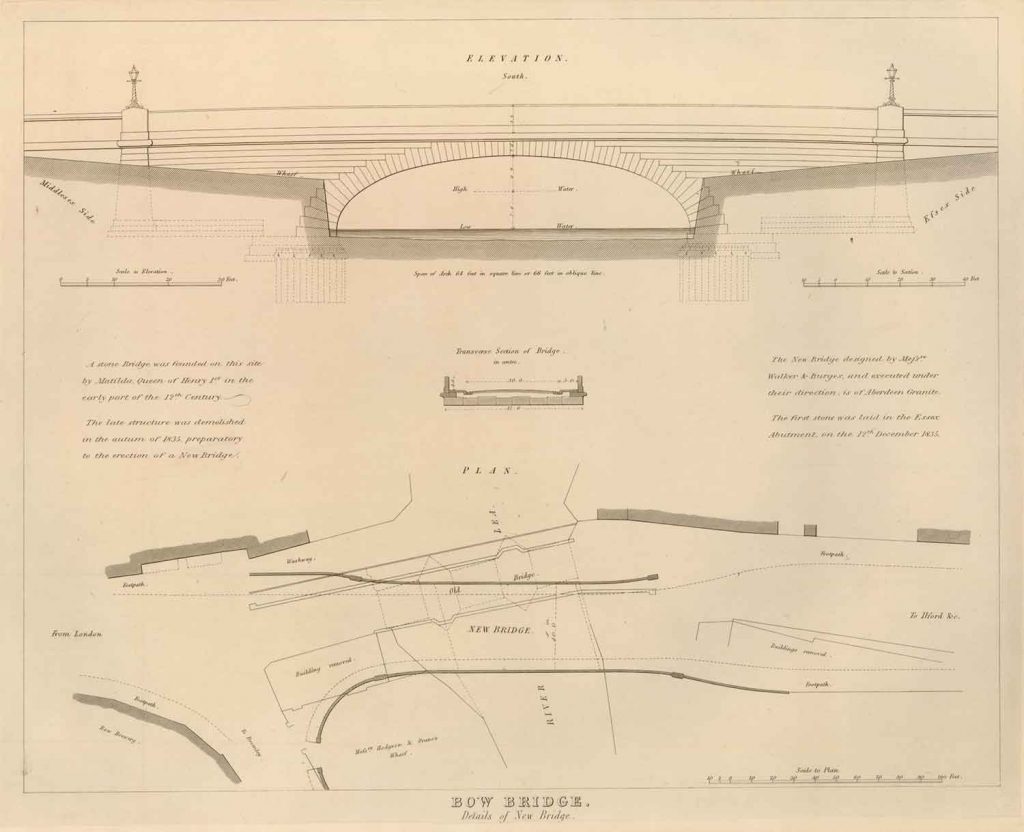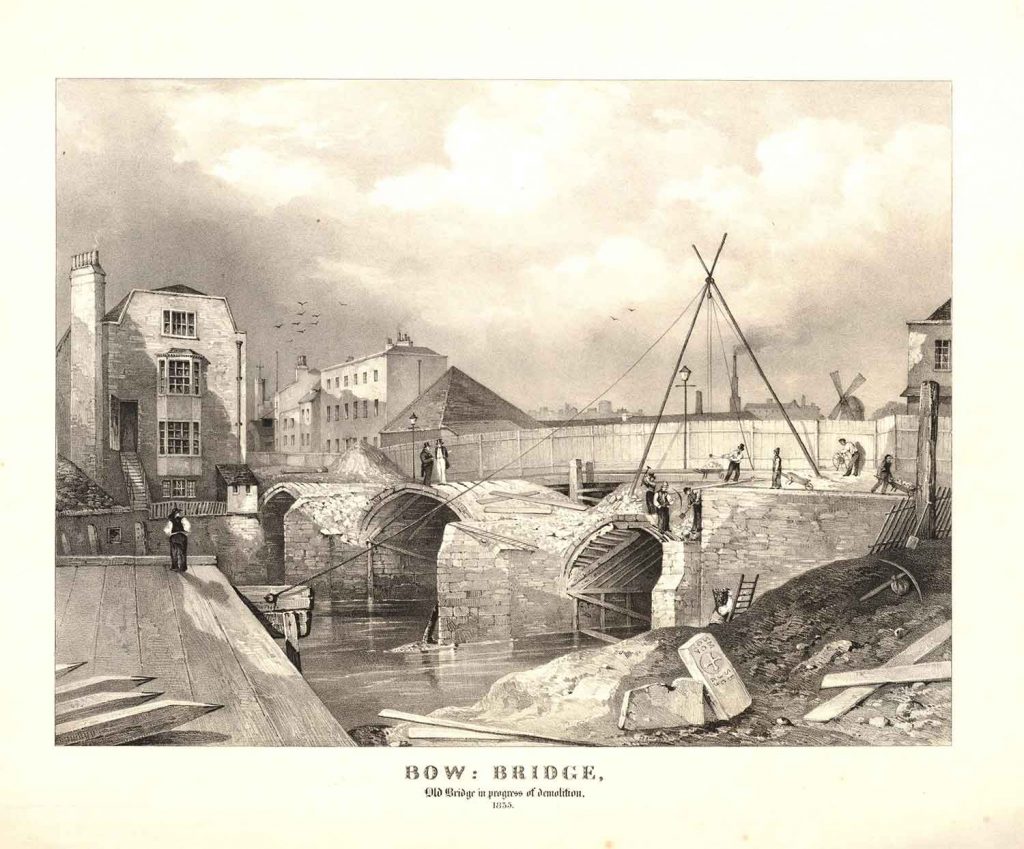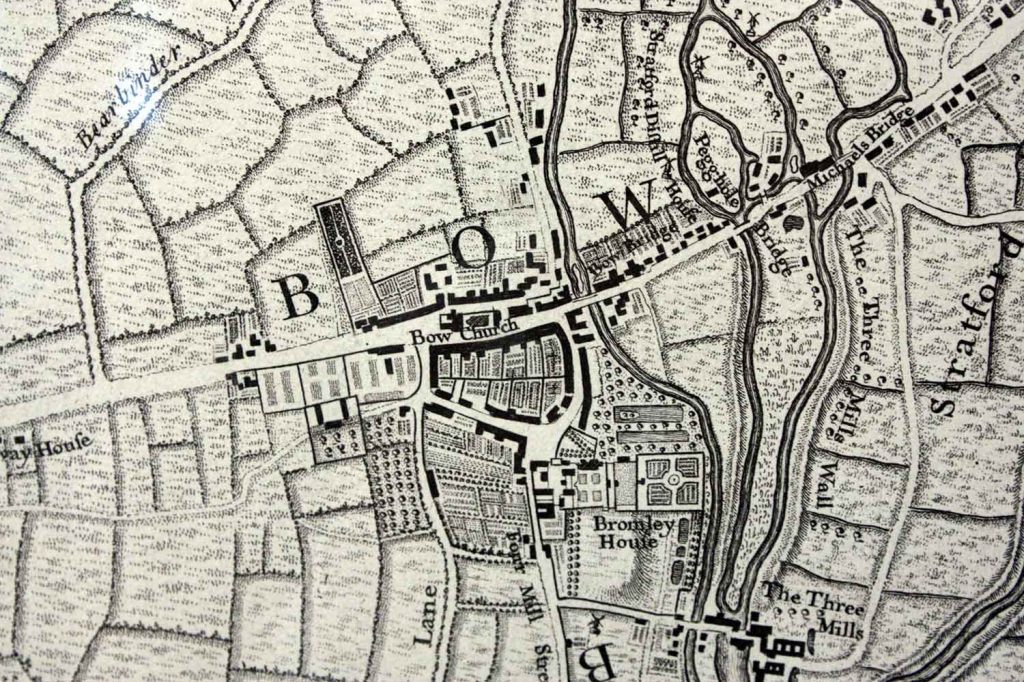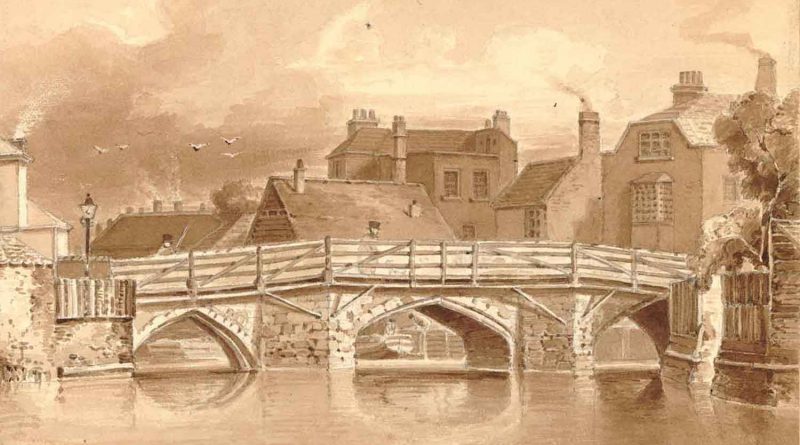How Queen Matilda’s dip in the Lea created Bow Bridge
The history of Bow Bridge is an invisible but important element of our identity, giving its name to the neighbourhood we love. But why was the bridge called Bow?
Back in 1110 Matilda, wife of Henry I, reportedly fell into the water while using the ford across the River Lea. No doubt contaminated by human and rat excrement, the river water wasn’t the most hygienic place for a dip.
Keen not to repeat the experience, Matilda ordered a distinctive bow-shaped, three-arched bridge to be constructed over the River Lea. Such a bridge, which was named Bow Bridge after its unique shape, had never been seen before. It gave its name to the area on the west of the Lea, which became known variously as ‘Stradford of the Bow’, ‘Stratford of the Bow’, ‘Stratford the Bow’, ‘Stratforde the Bowe’, and ‘Stratford-atte-Bow’.
Over time, the area became known simply as Bow, to distinguish it from Stratford Langthorne on the Essex side of the River Lea. In the following centuries, responsibility for repairs to the bridge was often the subject of contention.
The Abbess of Barking and Abbot of West Ham argued about their obligation, a dispute that was settled in 1315. West Ham was to maintain the bridge and highway, whereas the Abbess would pay £200 annually in recompense.
But the Abbey’s subsequent dissolution at the time of the Dissolution of the Monasteries in the 1530s caused further lengthy litigation over maintenance of the bridge at Bow – with the successor landowners finally being assigned responsibility in 1691.
In 1648, Bow Bridge and the surrounding area were the site of a minor battle during the Second English Civil War. The skirmish was between Parliamentary troops and Royalist forces, in which the latter were defeated.
The bridge was widened in 1741 and tolls were levied to meet expenses, but conflict over maintenance lasted until the 19th century. In 1834 the bridge needed to be rebuilt.
Messrs Walker and Burges were commissioned to redesign the bridge and they replaced the three arches with a single arch. It was constructed of Aberdeen Granite and the first stone was laid on the 12th December in 1835.
Local landowners agreed to pay half of the cost, with the other half being met by the counties of Middlesex (to the west) and Essex (to the east). Eventually, the upkeep of the bridge was taken over by the Middlesex and Essex Turnpike Trust. In 1866, West Ham took responsibility for its upkeep.
By the early 1960s, the congestion at Bow Bridge was so severe that the London County Council (LCC) started planning alternative routes across the River Lea.
Inspired by their success at Hammersmith, in 1963 son of Gulag escapee Vladimir V. Andrei Tchernavin designed a two-lane flyover, which would sit almost on top of the old bridge.
The work involved spanning the wide Blackwall Tunnel approach road and the traffic interchange with Bow Road, in the form of a large roundabout.
The history of Bow Bridge and how it was so-named may be nearly a thousand years old, but both the bridge (in some form) and its name have remained to this day and form an integral part of the history of the East End.
If you liked this you may like the history of Bow Road Tube Station, Bow Station and Bow Road Station.





